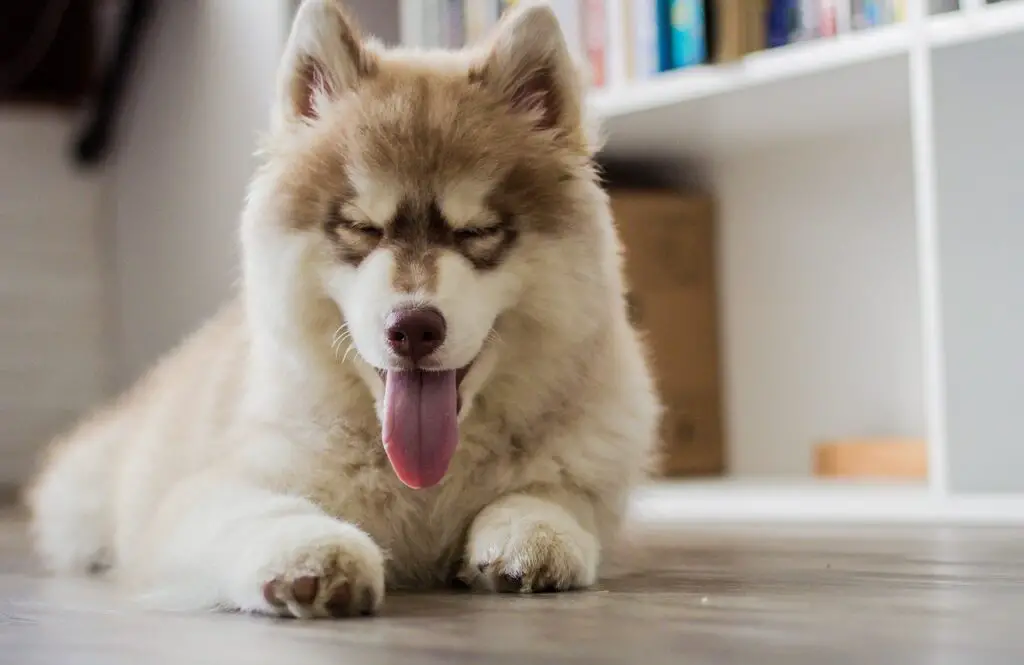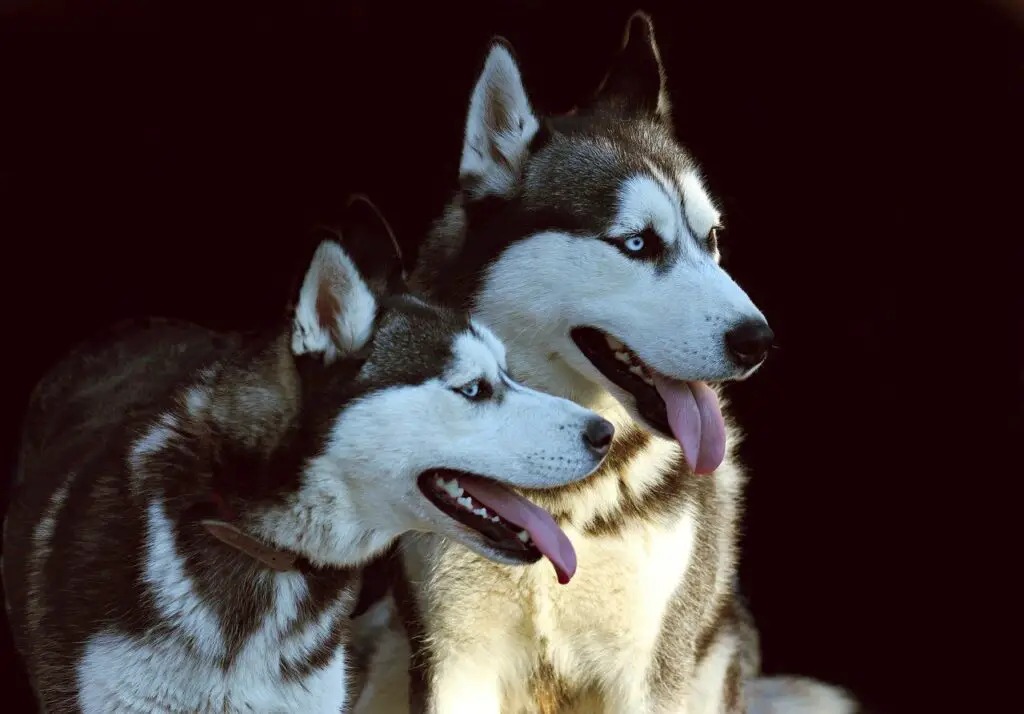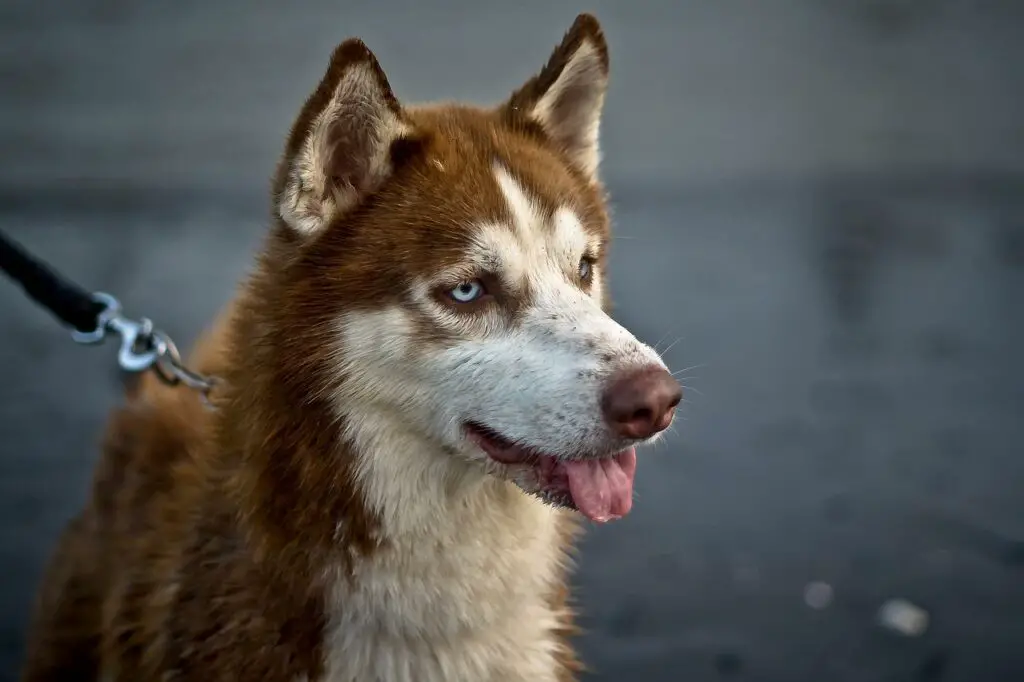You should exercise your husky for at least one hour a day.
This can be split up into two or three shorter sessions.
Exercise is an important part of the life of your dog.
It helps to keep them healthy and active, as well as improves their quality of life.
It’s also good for you and your dog, because it will help you both get in shape and stay that way.
If you are already exercising your dog regularly, then this article is not going to change anything about that.
However, if you haven’t been doing so yet, then read on!
If you are thinking about starting to exercise your dog, there are a few things you need to consider before getting started.
First, make sure you choose the right type of exercise for your dog.
Next, decide how often you want to work out with your dog.
Finally, make sure that you have everything you need to do these exercises.
You will find all of this information below.

The Benefits of Exercise
Exercise has many benefits, and it’s important to keep them in mind when you are planning your dog’s training schedule.
The benefits of exercise include:
- Improving the overall health of your dog.
- Enhancing their physical strength.
- Making them more agile and alert.
- Helping with weight loss (if overweight).
- Reducing anxiety.
- Maintaining good muscle tone.
- Strengthening the immune system.
- Preventing disease.
- Increasing their stamina and endurance.
1. Improving Overall Health
Dogs that are kept inactive have an increased risk of developing certain conditions such as hip dysplasia, arthritis, heart problems, intestinal disorders, diabetes and skin issues.
Regular exercise reduces these risks.
It also helps maintain a healthy weight.
Regular exercise will help to reduce the amount of fat around the waist, thighs, and stomach.
In addition it may make you feel less stressed and anxious as well as improve your mood.
Dogs that are exercised regularly also tend to live longer than those who don’t.
2. Enhancing Physical Strength
Physical strength is another benefit of regular exercise.
It helps strengthen muscles, bones and ligaments, making dogs stronger and able to perform more complex tasks.
It also improves their ability to run, jump and climb, which makes it easier for them to escape from danger, chase down prey and protect themselves.

3. Making Them More Agile and Alert
Agility refers to how quickly your dog can respond to new situations.
Agility is often measured by the distance they can jump and run in a given time period.
A dog that is fit and active will be better able to perform agility exercises than one that isn’t.
Alertness refers to how fast your dog can detect threats.
This includes being aware of other animals, people and objects that could pose a threat to them and reacting quickly to avoid injury or attack.
4. Helping With Weight Loss (If Overweight)
Weight management is another benefit of exercise.
If your dog is overweight, then regular exercise can help to get rid of some of this excess weight.
The best way to lose weight is to eat fewer calories and burn more through exercise.
Exercising your dog on a daily basis will help to increase his metabolism and speed up this process.
5. Reducing Anxiety
Anxiety is a common problem for many dogs.
It can cause your pet to be nervous and fearful of new things, even if they are perfectly safe.
When your dog is anxious, he won’t enjoy spending time with you.
He might become destructive and aggressive towards you or any other animals he sees.
6. Maintaining Good Muscle Tone
Good muscle tone is essential for your dog’s physical fitness, especially if they are going to participate in sports or other strenuous activities.
It’s also important to maintain good muscle tone if you want them to look their best.
7. Strengthening the Immune System
A strong immune system is vital for all living creatures, including humans, so why shouldn’t we give our dogs the same treatment?
When we exercise our dogs, we are helping to strengthen their immune systems.
This means that they will be able to fight off infections and illnesses much better than if they were not exercising regularly.
8. Preventing Disease
Inactive dogs are more likely to develop diseases of the joints, heart and lungs because they aren’t getting enough oxygen.
They may also have difficulty regulating their body temperature.
This means that they need extra care and attention when they are ill.

9. Increasing Stamina and Endurance
Your dog needs to build up their stamina and endurance.
These are both needed if they are going to be successful in participating in sporting events or long walks.
Without these qualities, they will struggle to complete these types of activities.
How Much Exercise is Needed
Your husky’s exercise requirements will vary depending upon their breed, age and size.
A husky that weighs around 50kg (110lb) will need an hour of exercise every day to stay fit.
If you have a smaller dog, it may only require 30 minutes to an hour of daily exercise.
A husky of any size should get 30 minutes of exercise every day.
However, if you have a larger husky, you should consider exercising it more often.
Some owners even go as far as having their dogs walk them during the day, which can help keep them in shape.
If you are looking for ways to increase your husky’s fitness levels, you should look into different types of exercises.
As well as walking your husky, there are other activities you can do with him.
Here are some ideas on how much exercise your husky needs.
Activity Level
If you want your husky to stay fit and healthy, then you should start by considering its activity level.
How active does your husky usually like to be? Do they enjoy running around the garden, or would they prefer to spend time sitting quietly?
It is important that you take this into account when planning how much exercise your husky needs.
If he is happy being sedentary, then you should make sure you give him plenty of downtime throughout the day.
On the other hand, if he likes to run around all day long, you can plan to exercise him more frequently.
Age
As your husky gets older, it will become harder for him to keep up his exercise schedule.
So, how old is too old for your husky? It depends on what kind of exercise you are giving your dog.
If you are just getting started with your husky, you should probably avoid training him until he is about eight months old.
This is because younger dogs have stronger muscles compared to adult dogs.
The muscles of an adult dog have already developed to handle the stress of everyday life.
So, it is best to wait until your husky has reached maturity before starting to exercise him.
Size
There is no set formula for how big your husky should be.
It depends largely on its breed, but also on its lifestyle.
For example, large breeds tend to put on weight easily.
Therefore, it is always advisable to weigh your dog regularly to get an accurate picture of his progress.
If you have a small dog, you could decide to exercise him less frequently.
But, if you have a larger dog, you should definitely plan to exercise him every day.
There are many different types of exercises you can choose from, so don’t worry if you feel overwhelmed!
Here are some examples of different types of exercises you can use to keep your husky healthy and fit.
- Walking
- Riding
- Swimming
- Tug-of-war
- Jumping rope
- Bounding
- Obedience
- Play fighting
- Fetching
- Sledding
- Trotting
- Dancing
- Groomer
- Running
- Rolling
- Hiking
- Playing Frisbee
- Climbing
- Swimming
- Tumbling
- Mountain biking
- Skateboarding
- Swim racing
Types of Exercise
There are several types of exercise you should do with your dog, and they all fall under the category of “physical activity”.
The type of physical activity will depend on what your dog needs in order to stay healthy and fit.
It is important that you understand how much exercise your dog needs in order to stay healthy and fit.
Some dogs need more than others, so don’t assume that just because your husky has been exercising for years that it doesn’t need any more.
Here are some factors that determine how much exercise your dog needs:
- Age
- Weight
- Size/Build
- Breed
- Activity level
If you have a puppy, make sure you talk to your vet about which exercises you should start doing right away.
Some puppies require specific training to help them become good companions with other pets and people.
Exercise Type 1 – Walking
Walking is probably the most common form of exercise.
It is also the easiest to implement as long as you have access to an open space.
A nice walk in the park is usually sufficient, but if you live near the beach, then walking along the shoreline would be ideal.
The key to making sure that your dog gets enough exercise is to go out for longer walks.
Make sure that you allow your dog to rest when he wants to, and take breaks whenever necessary.
Exercise Type 2 – Running
Running is another form of exercise that many dogs enjoy.
However, it requires a bit more preparation than walking does.
If you want to try running with your dog, then you should first check with your veterinarian to see if he approves of this type of exercise before starting.
If you decide to run with your dog, make sure that you use a leash and that you always pick a safe place to run.
When you run with your dog, make sure that you give him plenty of room to run around.
Don’t forget to stop every now and then to let your dog catch his breath.
Exercise Type 3 – Agility
Agility training is perfect for small dogs, such as poodles, chihuahuas, and toy breeds.
Agility is also great for older dogs who may not be able to run as fast as they used to.
To get started with agility training, you will need to find a qualified instructor.
There are many places where you can find a class, including online resources like Dog Agility Training.
You will also find instructors listed in local newspapers, magazines, and even in pet care books.
Getting Your Husky to Exercise
If you have never trained your dog before, it might be hard to know where to start.
Here are some tips on how to get started with training your husky and what types of exercises you should do.
- Find out why you should train your dog. Is it because you love them? Do they help you in your work? Or is it just something fun that you like doing together?
- Train with other dogs. If you have a friend who also has a husky, go to the park and play ball with them. It will make things much easier if you already have someone to practice with.
- Make sure you choose an appropriate time to train. A good time of the day is between 8am and 10am. During this time of the morning, both you and your dog will be fresh and ready to go. When choosing a time, try not to use this as an excuse to skip breakfast!
- Choose a quiet area. There is nothing worse than being interrupted by children who want to pet your dog. Make sure you choose somewhere where no-one will bother you while you train.
- Take your dog’s food with you when you go. This way, you won’t have to worry about leaving him hungry after he finishes his exercise. The same goes for water. Most dogs need a lot of water every day so make sure you take enough with you. You can find out more information on how much water your husky needs here.
- Don’t make your dog run around too long. If you let him run for too long without stopping, he could damage his joints. Try to keep it short and intense. For example, walk briskly for five minutes then stop for ten seconds.
- Try different types of exercises. Every dog is different and what works for one may not work for another. Therefore, don’t get stuck to one type of exercise. Instead, mix it up and see which ones suit your dog best.
- Reward your dog with treats after each session. Some people think that rewards only encourage bad behavior but actually they can be used to reward good behavior. After all, who doesn’t like getting a treat?
- Use toys to motivate your dog. They can be used as rewards or as distractions. You can even combine the two methods. If your dog does something right, give him a toy. But if he does something wrong, take away the toy.
- Give your dog lots of praise. Praise is very important in making your dog feel valued. So, make sure you tell him he did well after every session. You should also praise him after every session whether he does something right or wrong.
- Practice makes perfect. Don’t expect to teach your dog everything overnight. Instead, set aside some time during the week for practicing new skills. As your dog gets better, you can add more difficult tasks to his routine. Eventually, you will reach the point where you won’t need any additional training sessions.
Conclusion
The more you work with your husky, the better it will be in the long run.
It is important that you make sure that you are not overworking him.
A good way to tell if he is overworked is if his coat starts to look dull and duller than it did before.
This is because of the lack of vitamins, minerals, and nutrients that they need from their diet.
If this happens, then you should cut down on how much time you spend exercising your husky so that he gets the vitamins and nutrients he needs.
You should also make sure that you give him plenty of water throughout the day.
This keeps him hydrated which helps his body function properly.
If you don’t have a dog bowl, you can use a large plastic bag instead.
Another thing you should do is to keep an eye out to see if he has any signs of pain.
Pain could indicate that there is something wrong with his joints or muscles.
You should take him to the vet immediately if you notice anything like this happening.
By making sure that you are taking care of your husky, you can prevent any issues from occurring that might harm your pet.
By doing this, you will be able to enjoy your husky for many years to come.
- What Dog Breeds Have Pink Skin? - March 24, 2023
- What Are the Most Inspiring Dog Breeding Quotes? - March 20, 2023
- Can Pheromone Spray Help Improve Dog Breeding Results? - March 19, 2023








